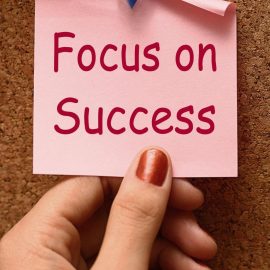

This article is an excerpt from the Shortform book guide to "How to Change" by Katy Milkman. Shortform has the world's best summaries and analyses of books you should be reading.
Like this article? Sign up for a free trial here.
What are the benefits of self-confidence? How does having self-confidence impact you?
Among the benefits of self-confidence is the ability to make meaningful life changes that stick. When you have more confidence in yourself, you have a better chance of succeeding when you try to make a change.
Continue reading to learn how self-confidence can help you succeed at your goals.
Change Requires Self-Confidence
One of the benefits of self-confidence is the way that it enables self-improvement. Believing in your ability to succeed can make or break any effort to change your behavior. This is because our expectations (or beliefs) about what will happen influence what transpires in at least four ways:
- Emotionally, your expectations can either drum up your energy or suppress it. When you feel good about your chances of making a change, that emotional energy will help you to succeed.
- Attentionally, positive expectations can help you to interpret a difficult activity—such as grinding out hours of deep work—as something energizing and enjoyable.
- Motivationally, the way you interpret things can improve your ability to follow through—for instance, focusing on the cognitive benefits of deep work can improve your energy levels.
- Physiologically, positive expectations can change how your body responds to an activity and thereby yield better results.
| Belief, Behavior, and Personal Transformation In Awaken the Giant Within, Tony Robbins takes these ideas even further, arguing that your beliefs and the decisions they lead you to determine your destiny—that is, the outcome of your life. For Robbins, your beliefs follow from the thoughts you choose to think, and those follow from where you direct your attention. If you focus your attention on positive, empowering thoughts (“I can do it; I am strong enough”) you’ll start to feel good and reinforce those as new beliefs. This gives you the motivation and physical energy to make new choices, follow through on your commitments, and grow as a person. Robbins recommends a seven-day challenge to master these four aspects of your inner life—your attention, your emotions, your motivation, and your physical energy. This seven-day challenge includes steps such as taking charge of your emotional and physical health, communicating honestly with your partner, and creating a personal code of conduct, all of which could lead to new beliefs and enhanced self-confidence that’ll help you put these strategies into action. |
To develop your self-confidence, you can use a number of tactics:
- Form peer support groups. Research shows that teaching and mutual mentoring can boost self-confidence in all involved participants.
- Affirm your past successes. Take the time to think through your past accomplishments, and let yourself feel good about how far you’ve come already.
- Embrace growth. Focus on the effort involved in change and understand learning as an incremental process that necessitates mistakes. Give yourself grace and understanding, and you’ll see more opportunities to grow each day.
| Radical Acceptance as Another Source of Self-Confidence While this advice for growing your self-confidence is simple, it may not be easy to implement. Luckily, it’s possible to build self-confidence thanks to—not in spite of—any difficulties you may encounter. To do so, you can augment these suggestions with Radical Acceptance, a meditative technique that can help you process feelings of inadequacy and develop greater confidence. For example, the first two tactics assume that you have either supportive peers or a successful past. But if you feel you have neither, her advice could actually make you feel less confident. As Tara Brach explains in Radical Acceptance, feeling inadequate often causes a downward spiral of negative thoughts that reinforce the idea that you’re unworthy. Instead of going along with these conditioned patterns, Radical Acceptance asks you to sit with and fully feel all your emotions, positive and negative. In time, this brings you to a fuller acceptance of yourself and more experiences of spontaneous positive emotion. Likewise, many experts reference Carol Dweck’s ubiquitous concept of a growth mindset—but how do you actually form one? Try doing so by going out of your way to make mistakes, and then watching how you react. If you feel uncomfortable or averse to trying again, you might have a fixed mindset. In this case, you could use Radical Acceptance to sit with the stress reaction you’ve learned in response to failure. By working through it, you may find yourself accepting the reality of mistakes and becoming more willing to push on through. Repeat this little practice, and you can recondition yourself to approach failure with acceptance and curiosity rather than fear and aversion—laying the seeds for your new growth mindset. |

———End of Preview———
Like what you just read? Read the rest of the world's best book summary and analysis of Katy Milkman's "How to Change" at Shortform.
Here's what you'll find in our full How to Change summary:
- An evidence-based approach to creating lasting change
- How to overcome common human failings, such as procrastination
- When the best time to enact changes in your life is






